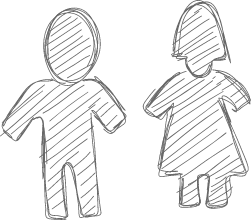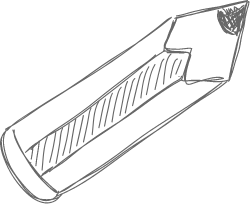NorthBridge is the preferred SR&ED consulting firm within the clean technology sector with a strong commitment to contributing to clean technology initiatives. As active members of both the Ontario Sustainable Energy Association (OSEA) and the Canadian Solar Industry Association (CanSIA), we advocate for and facilitate SR&ED as the foundation for future sustainable autonomy of this industry sector. With industry experts in sectors from renewable energy to information technology, NorthBridge is equipped to support your clean-tech projects. Clean technology development is reliant on research and development to generate new and innovative solutions and to improve existing technologies and structures related to environmental footprint, energy efficiency or other similar targets. Canada’s Scientific Research and Experimental Development (SR&ED) program is designed to fund and reward your company’s initiatives. NorthBridge can help you maximize your return on investment in clean technology through SR&ED and other government incentive programs.
Clean technology is a broad industry term describing initiatives working toward energy efficient, low-carbon and environmentally-conscious solutions. Clean technology is developed with a concern for climate change, maximizing on renewable resources, reducing the environmental footprint and minimizing the production of environmental contaminants. Canada, a global leader in clean energy, is home to over 1100 clean energy technology companies, contributing vast expertise and resources towards innovating clean and environmentally friendly technologies.
In 2010, Canadian clean technology accounted for $9.1 billion of the GDP with the expectation that this number would double within the next five years. Canada’s contribution of emerging renewable energy sources in total electricity generation has grown steadily at an average annual rate of 12% over the last twenty years, with wind power generation leading in industry expansion. The SR&ED program is a good resource to offset costs in developing technology to harness energy from renewable sources and compensate for reductions in Ontario’s Feed-in Tariff (FIT) Programs for renewable energy generation. Through sustained research and development efforts, Canada is developing clean technologies that can compete with and surpass their conventional counterparts.
Clean technology innovation can occur in multiple service or product sectors, including:
- Advanced fuels and clean fossil fuel technologies
- Residential and commercial building systems and energy efficiency
- Conservation and demand management
- Smart-grid development and integration
- Solar energy
- Hydropower
- Geothermal energy
- Wind power
- Green chemistry, biomass and biofuel
- Recycling and waste
- Electric transportation technologies
- Clear air technologies
- Computer modeling
Clean technology is in no way limited to these sectors; new and forward-thinking approaches to global and local environmental challenges are important components in the advancement of clean technology.
You May Be Eligible If:
- You have contributed time and resources to reducing your company’s or product’s environmental footprint, energy consumption or waste production
- Your products or services support smart-grids, electric transportation, renewable energy, waste-to-energy initiatives or component development and production
- You have experimented with component materials or introduced non-toxic materials
- You are engaged in energy conservation and demand management
- You are engaged in adapting and testing applications or products with respect to variable weather and environmental conditions
- You have developed in-house software or digital media products
To learn how the experts at NorthBridge will help you recover the costs of ideas and advancements, or if you are unsure whether the work you do qualifies for the SR&ED program, contact us for more information or a free consultation about provincial tax credits. Additional clean technology and renewable energy information is available through the OSEA and CanSIA websites.






